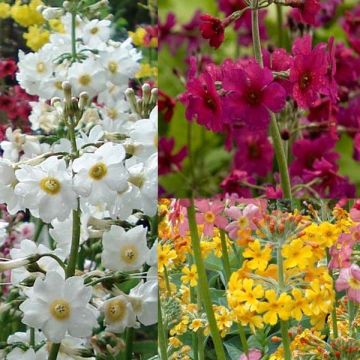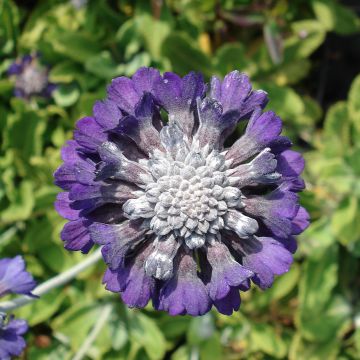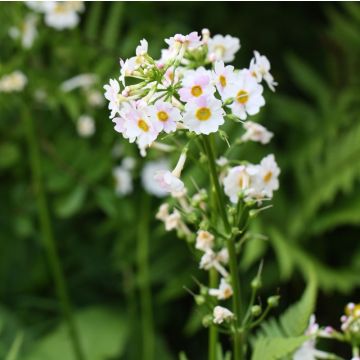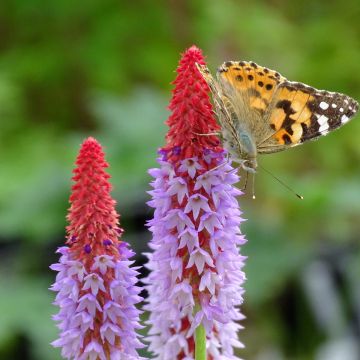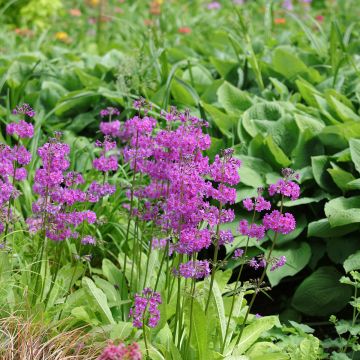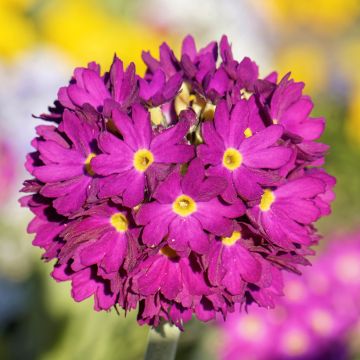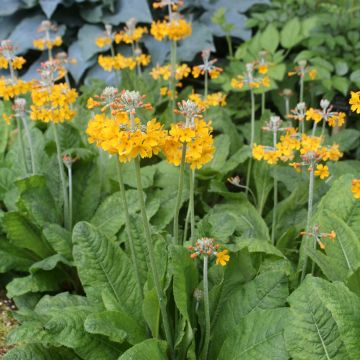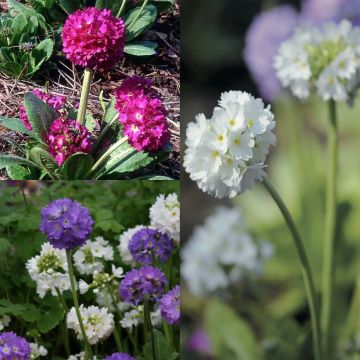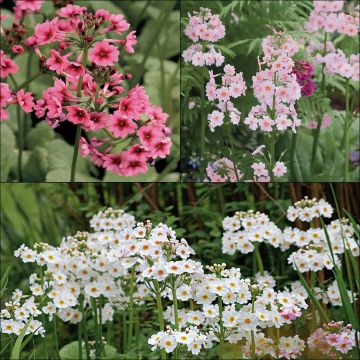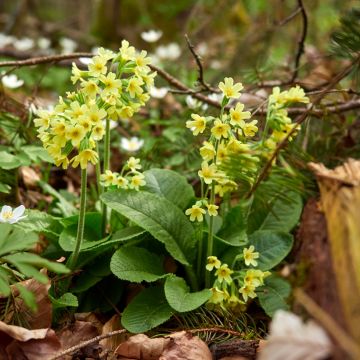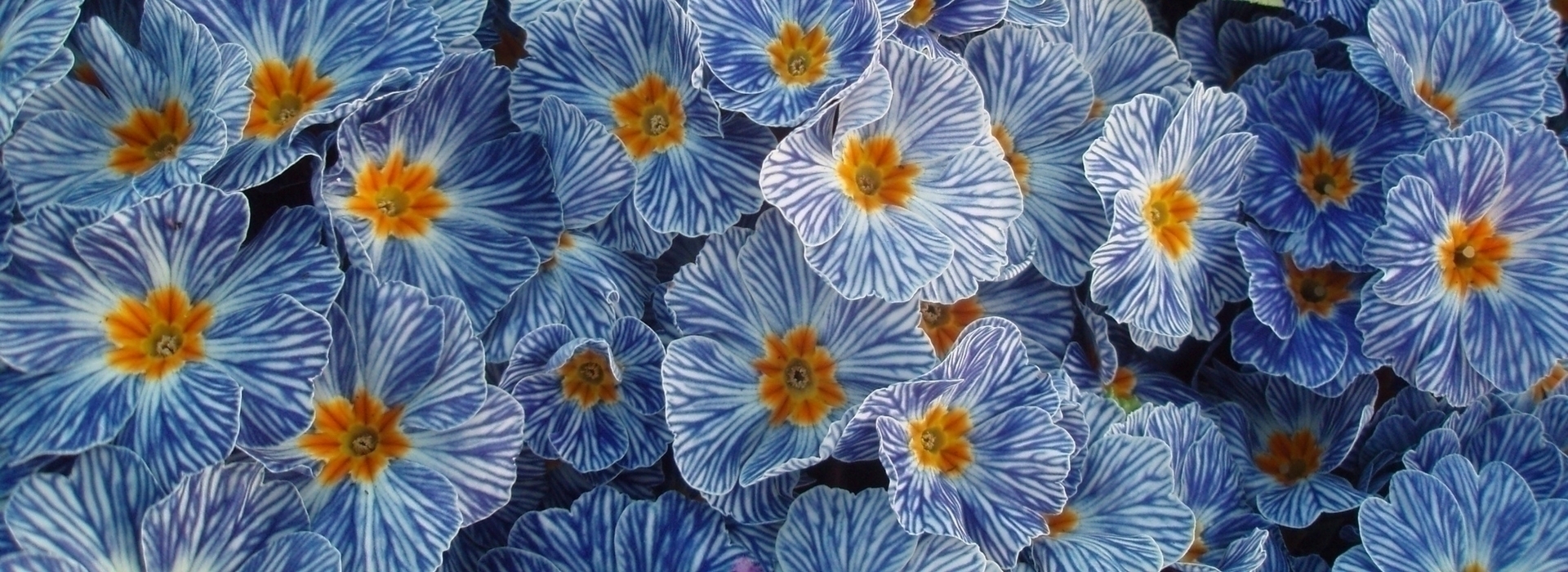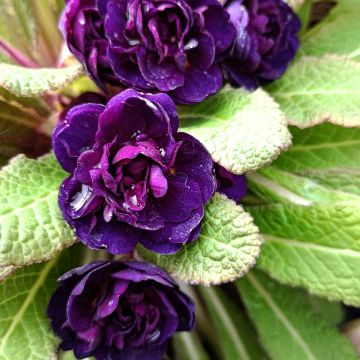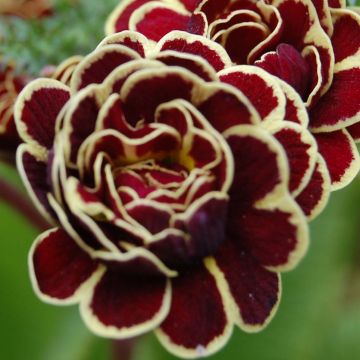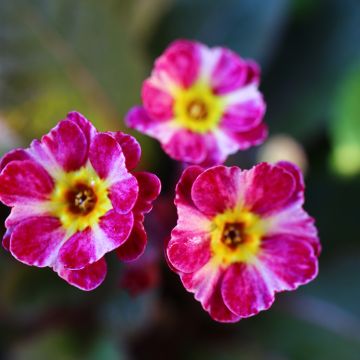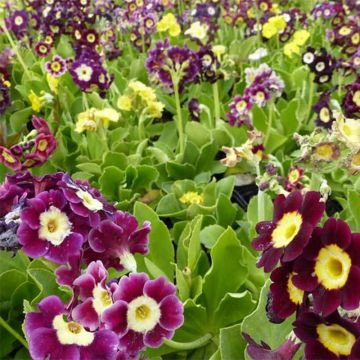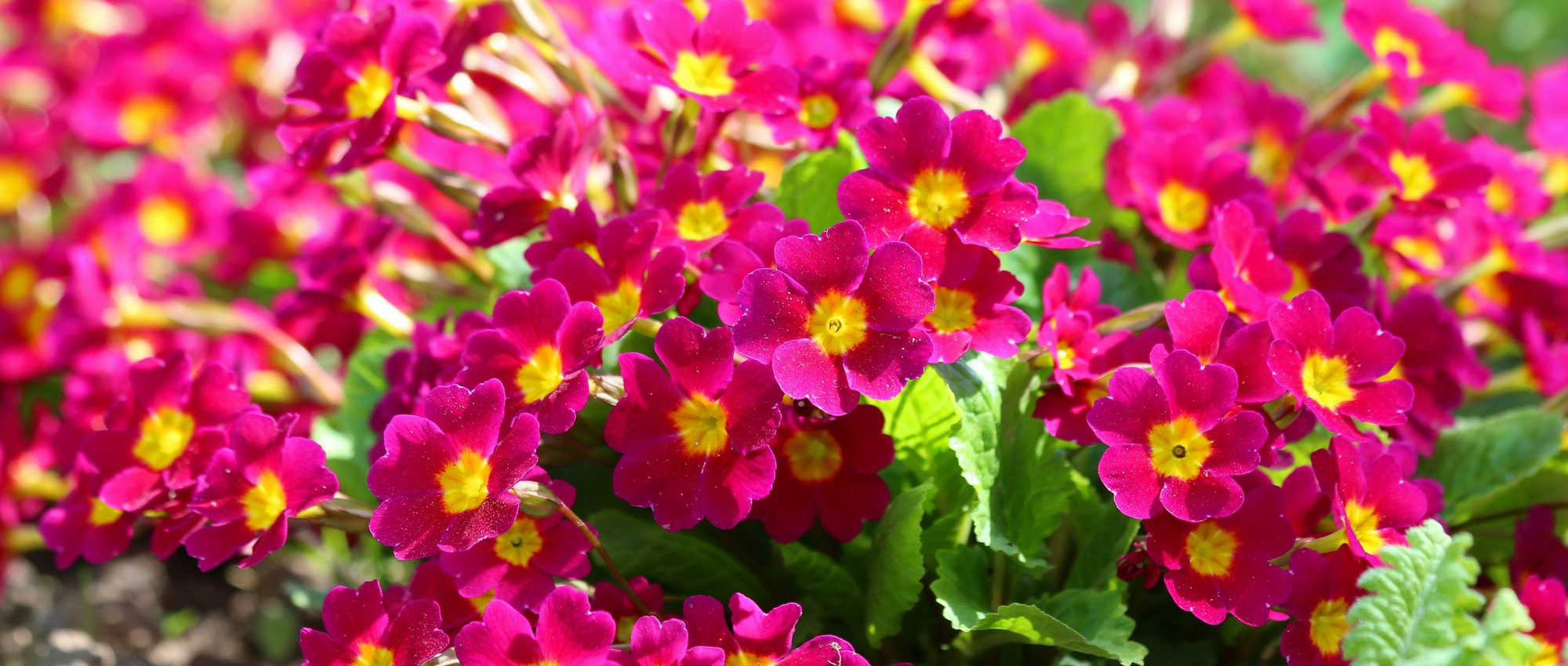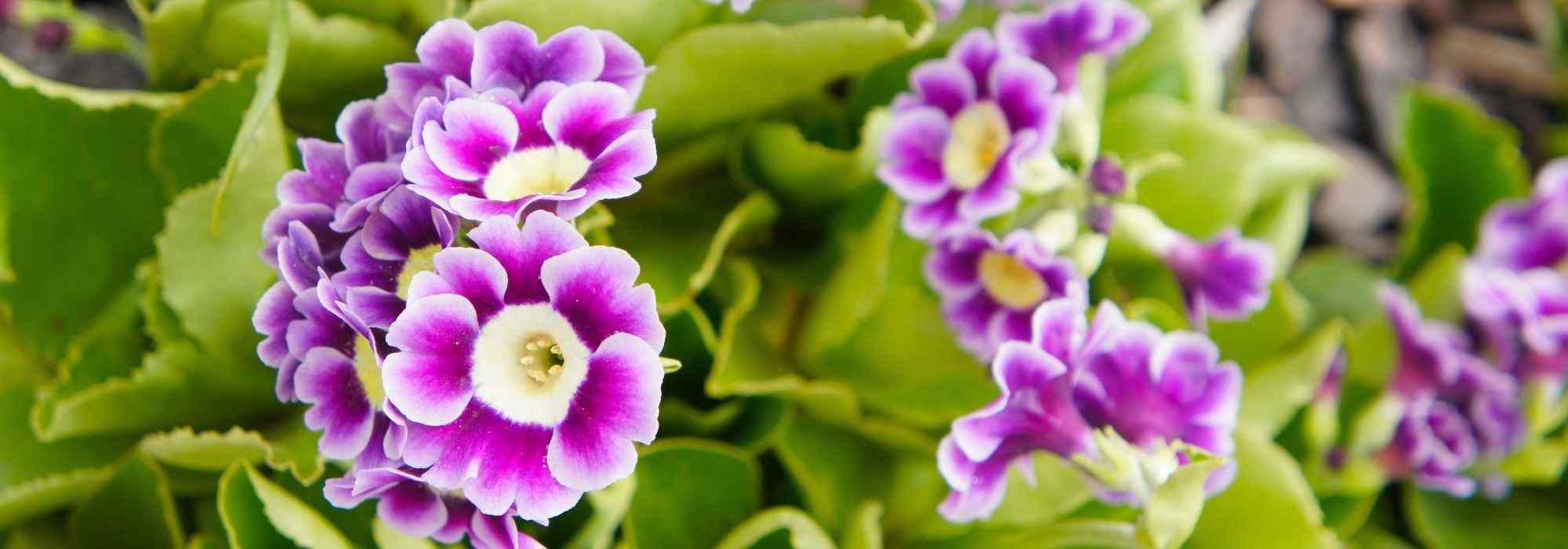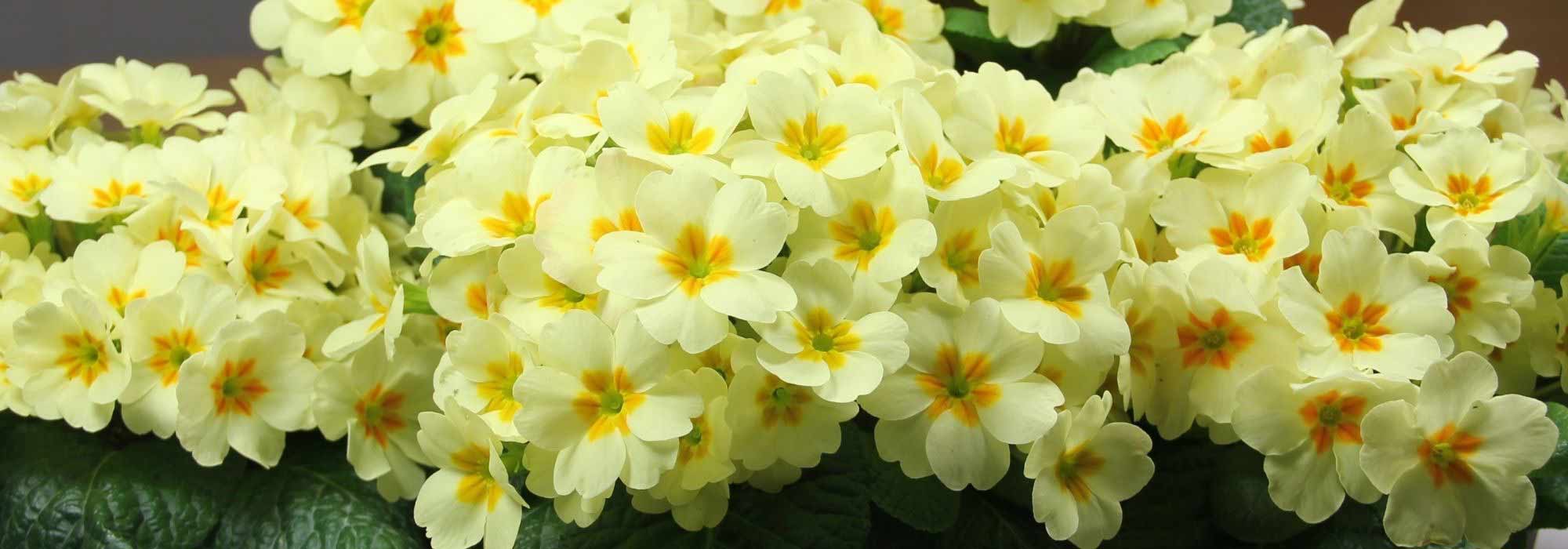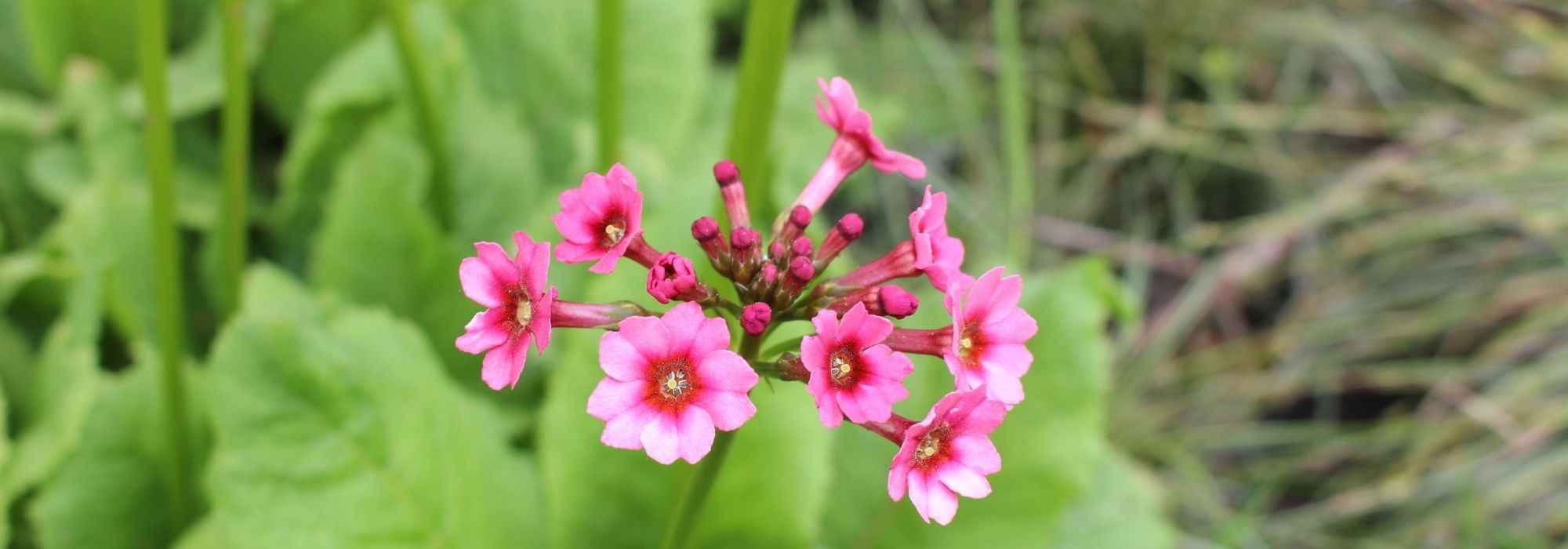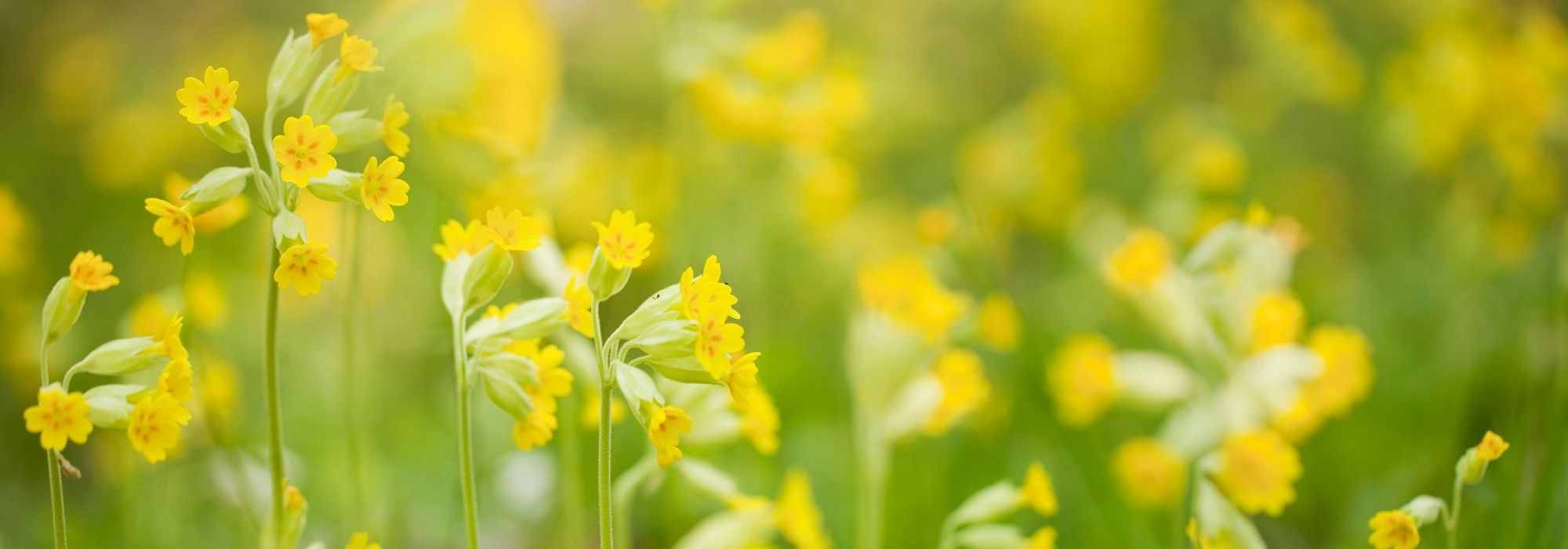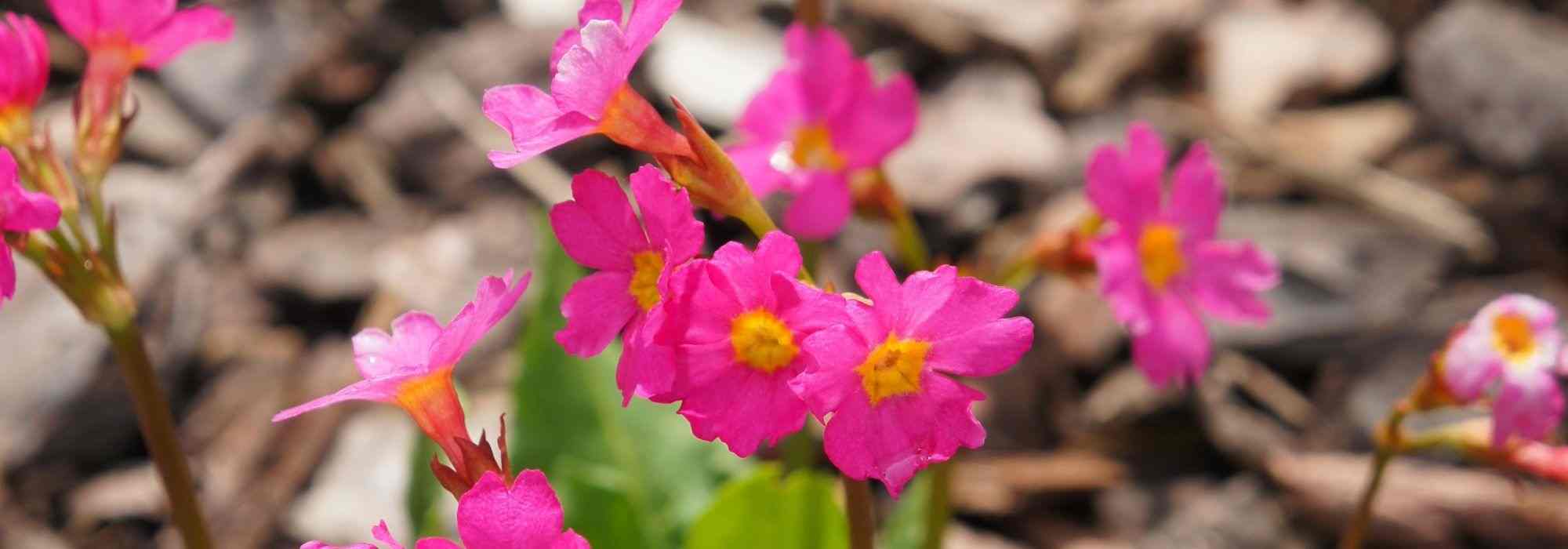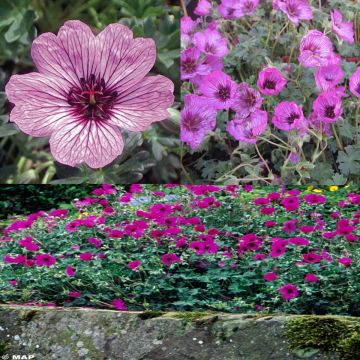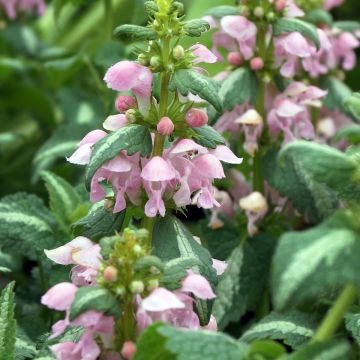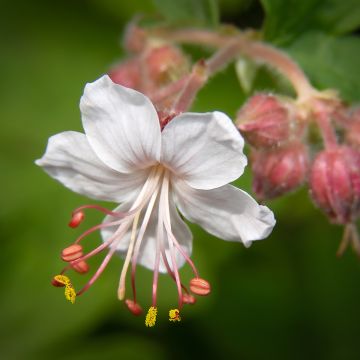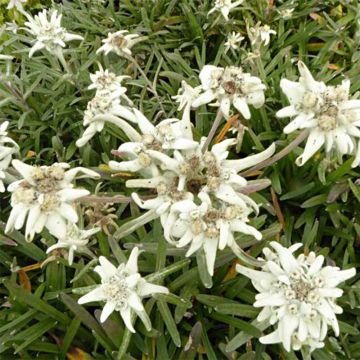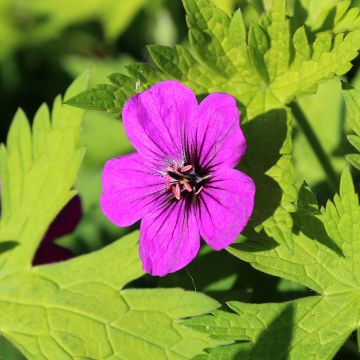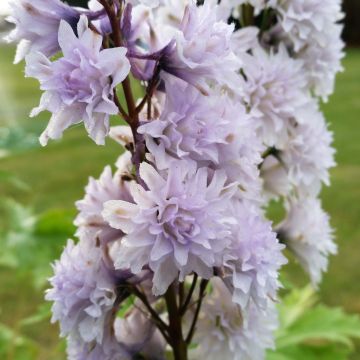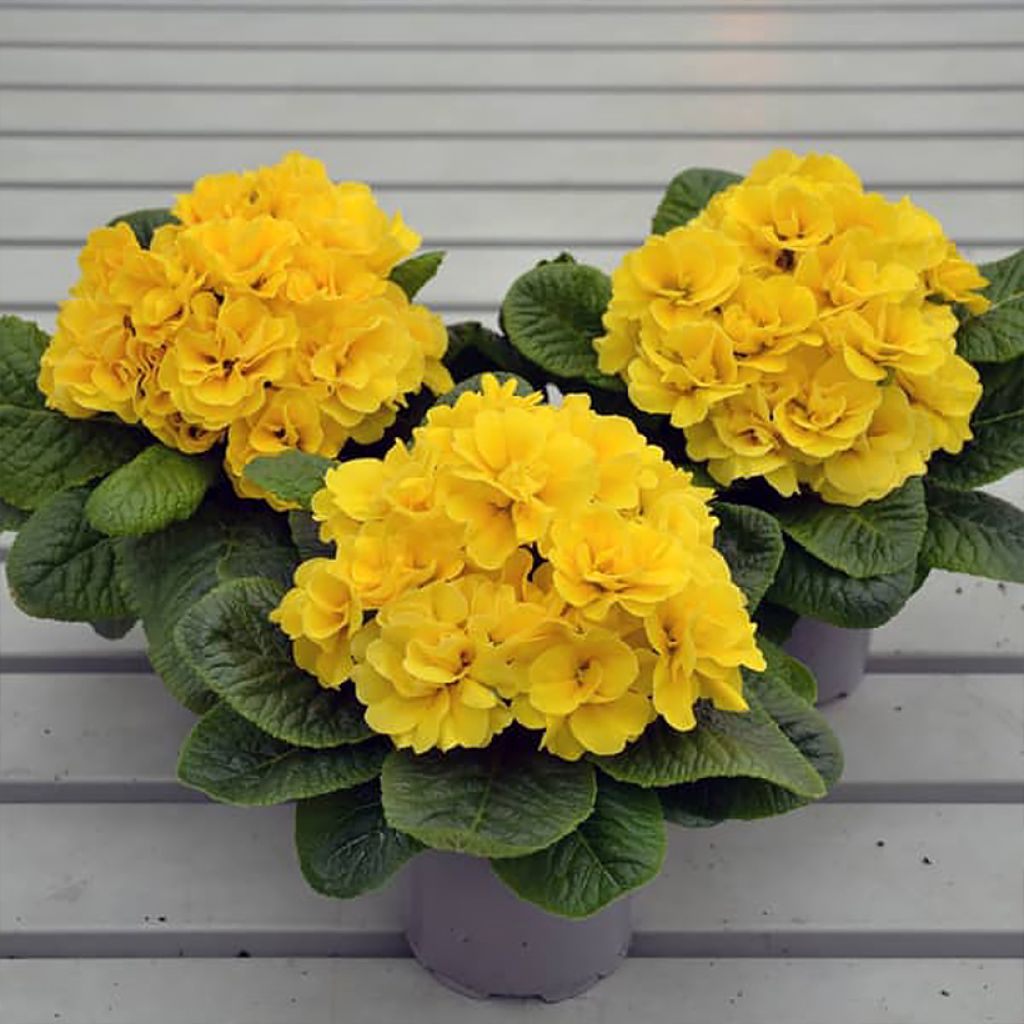

Primevère double Rubens Yellow F1 - Primula hybrida
Primula Rubens Yellow F1 - Primrose
Primula Rubens Yellow F1
Hybrid Primrose
Special offer!
Receive a €20 voucher for any order over €90 (excluding delivery costs, credit notes, and plastic-free options)!
1- Add your favorite plants to your cart.
2- Once you have reached €90, confirm your order (you can even choose the delivery date!).
3- As soon as your order is shipped, you will receive an email containing your voucher code, valid for 3 months (90 days).
Your voucher is unique and can only be used once, for any order with a minimum value of €20, excluding delivery costs.
Can be combined with other current offers, non-divisible and non-refundable.
Why not try an alternative variety in stock?
View all →This plant carries a 6 months recovery warranty
More information
We guarantee the quality of our plants for a full growing cycle, and will replace at our expense any plant that fails to recover under normal climatic and planting conditions.
Would this plant suit my garden?
Set up your Plantfit profile →
Description
The Primula 'Rubens Yellow' F1 is a hybrid Primrose that doesn't go unnoticed! A semi-late variety, it offers large double flowers in a very bright intense yellow from February onwards. A vigorous variety, it has the advantage of being able to be grown both outdoors and indoors. A few plants are enough to fill a large decorative pot and create an attractive flowering display. When planted in the garden, it is perfect for bringing light to winter borders in partial shade and in cool to moist soil, for example near a water feature or along an east-facing pathway.
Primroses constitute a rich genus of over 400 species, which has given its name to the botanical family that hosts them, the Primulaceae. This family includes a few other genera of minor ornamental importance compared to Primroses, such as Androsaces, small rock plants. In the Primula genus, we find native, wild plants such as Primula veris, better known by its common name Cowslip, easily recognizable by its yellow flowers in spring and widespread in France and Europe. Some species bring joy to collectors, such as the P. vialii with its orchid-like flowers in spikes, the P. denticulata with its globular flowers, or the P. pulverulenta with its pagoda-like flowers, arranged along the floral stem, also known as Candelabra Primrose for this reason. It is also a genus that greatly inspires breeders, who delight in constantly introducing new hybrids to the market, always more floriferous and decorative. These perennial Primroses are most often used as biennials to flower borders in winter and spring.
The Primula 'Rubens Yellow' F1 is a creation marketed by two Belgian and German horticultural companies. This garden Primrose is an F1 hybrid, resulting from a cross-breeding between 2 "pure" varieties, which allows for superior vigour compared to the parents, known as the heterosis effect. The desired effect often applies to flowering, which is more abundant or of larger dimensions, or to other interesting criteria such as compactness or, conversely, vigour.
Rubens Yellow F1 is thus a variety with great power, forming a very compact clump, wider than it is tall, perfect for container cultivation. A few plants can completely fill a large decorative pot, creating a magnificent display in late winter and early spring. With its short flower stems, characteristic of the species P. acaulis from which it originates (acaule meaning stemless), the flowers appear as if they are placed on the dark green textured foliage, which serves as their setting. A semi-late variety, this flowering occurs in February-March and displays extremely decorative large double flowers in a bright yellow colour. This hybrid has the advantage of being able to grow both outdoors, like traditional varieties, and indoors, bringing spring into your home!
Being quite hardy, down to at least -20°C (-4°F), this Primrose appreciates fresh but sufficiently well-drained soils, as it does not tolerate excessive water or drought. Relatively demanding, it requires a neutral to slightly acidic soil, rich in humus. It also tolerates heavy and clay soils, provided they are not too wet in winter. It will be comfortable in a partially shaded position, in any case not exposed to direct sunlight. As an F1 hybrid, it will not self-seed like pure varieties would. You can also grow it in a container, alone or combined with other plants to decorate your balcony, not hesitating to mix dwarf conifers, perennials, or grasses with biennials.
Breeders strive to produce hybrids that are increasingly attractive and colourful. With 'Rubens Yellow' F1, their ambition is to compete with flower bouquets with a variety capable of flowering for a long time indoors. Of course, you can also grow it in the garden, by associating it with other Primroses or even with other plants that, like it, appreciate partial shade. You can plant it next to bulbs, such as the charming little Muscari armeniacum 'Blue Spike', whose flowers, also double, but blue, will contrast nicely with the yellow of Rubens Yellow F1. Another striking colour combination can be achieved by adding the Bergenia 'Ouvertüre', a perennial with large green leaves turning purple in autumn, and especially with its vibrant magenta flowers. And to take over from this beautiful Primrose, consider charming Brunneras, whose small flowers resembling Forget-me-nots bloom from April onwards.
Flowering
Foliage
Plant habit
Botanical data
Primula
Rubens Yellow F1
Primulaceae
Hybrid Primrose
Cultivar or hybrid
Other Primula - Primroses
View all →Planting and care
Primroses can be planted in pots and containers or directly in the ground in finely prepared and enriched soil. Plant them as soon as possible upon receipt, in September-October or March-April. If the intended location is not yet ready or if the conditions are unfavorable for planting, you can let them grow in pots for 4 to 6 weeks. 'Rubens Yellow' F1 also has an interesting characteristic, it can be grown indoors as a potted flower.
In pots and containers, use a good soil for flowering plants (such as geranium soil) enriched with clay and slow-release fertiliser, lightweight and well-draining. The top of the plug should be level with the soil. Water generously at planting and during the following weeks, as plug plants can dry out quickly. Primulas don't like dryness, but be careful with excess water too, as they also fear it! Make sure to use containers with drainage holes and empty the saucer 10 minutes after watering. Remember to water even during winter if it doesn't rain or if the container is placed in an area sheltered from precipitation. Do not water during freezing periods.
Very floriferous and fast-growing, Primroses are greedy plants. As soon as growth resumes, in late February or early March, and throughout the flowering period, apply a liquid fertilizer for flowering plants containing iron and trace elements 1 to 2 times a week in the watering can. Remove faded flowers to promote new blooms. Once the flowering is over, potted plants can be replanted in the garden in partial shade.
Planting period
Intended location
Care
Planting & care advice
This item has not been reviewed yet - be the first to leave a review about it.
Similar products
Haven't found what you were looking for?
Hardiness is the lowest winter temperature a plant can endure without suffering serious damage or even dying. However, hardiness is affected by location (a sheltered area, such as a patio), protection (winter cover) and soil type (hardiness is improved by well-drained soil).

Photo Sharing Terms & Conditions
In order to encourage gardeners to interact and share their experiences, Promesse de fleurs offers various media enabling content to be uploaded onto its Site - in particular via the ‘Photo sharing’ module.
The User agrees to refrain from:
- Posting any content that is illegal, prejudicial, insulting, racist, inciteful to hatred, revisionist, contrary to public decency, that infringes on privacy or on the privacy rights of third parties, in particular the publicity rights of persons and goods, intellectual property rights, or the right to privacy.
- Submitting content on behalf of a third party;
- Impersonate the identity of a third party and/or publish any personal information about a third party;
In general, the User undertakes to refrain from any unethical behaviour.
All Content (in particular text, comments, files, images, photos, videos, creative works, etc.), which may be subject to property or intellectual property rights, image or other private rights, shall remain the property of the User, subject to the limited rights granted by the terms of the licence granted by Promesse de fleurs as stated below. Users are at liberty to publish or not to publish such Content on the Site, notably via the ‘Photo Sharing’ facility, and accept that this Content shall be made public and freely accessible, notably on the Internet.
Users further acknowledge, undertake to have ,and guarantee that they hold all necessary rights and permissions to publish such material on the Site, in particular with regard to the legislation in force pertaining to any privacy, property, intellectual property, image, or contractual rights, or rights of any other nature. By publishing such Content on the Site, Users acknowledge accepting full liability as publishers of the Content within the meaning of the law, and grant Promesse de fleurs, free of charge, an inclusive, worldwide licence for the said Content for the entire duration of its publication, including all reproduction, representation, up/downloading, displaying, performing, transmission, and storage rights.
Users also grant permission for their name to be linked to the Content and accept that this link may not always be made available.
By engaging in posting material, Users consent to their Content becoming automatically accessible on the Internet, in particular on other sites and/or blogs and/or web pages of the Promesse de fleurs site, including in particular social pages and the Promesse de fleurs catalogue.
Users may secure the removal of entrusted content free of charge by issuing a simple request via our contact form.
The flowering period indicated on our website applies to countries and regions located in USDA zone 8 (France, the United Kingdom, Ireland, the Netherlands, etc.)
It will vary according to where you live:
- In zones 9 to 10 (Italy, Spain, Greece, etc.), flowering will occur about 2 to 4 weeks earlier.
- In zones 6 to 7 (Germany, Poland, Slovenia, and lower mountainous regions), flowering will be delayed by 2 to 3 weeks.
- In zone 5 (Central Europe, Scandinavia), blooming will be delayed by 3 to 5 weeks.
In temperate climates, pruning of spring-flowering shrubs (forsythia, spireas, etc.) should be done just after flowering.
Pruning of summer-flowering shrubs (Indian Lilac, Perovskia, etc.) can be done in winter or spring.
In cold regions as well as with frost-sensitive plants, avoid pruning too early when severe frosts may still occur.
The planting period indicated on our website applies to countries and regions located in USDA zone 8 (France, United Kingdom, Ireland, Netherlands).
It will vary according to where you live:
- In Mediterranean zones (Marseille, Madrid, Milan, etc.), autumn and winter are the best planting periods.
- In continental zones (Strasbourg, Munich, Vienna, etc.), delay planting by 2 to 3 weeks in spring and bring it forward by 2 to 4 weeks in autumn.
- In mountainous regions (the Alps, Pyrenees, Carpathians, etc.), it is best to plant in late spring (May-June) or late summer (August-September).
The harvesting period indicated on our website applies to countries and regions in USDA zone 8 (France, England, Ireland, the Netherlands).
In colder areas (Scandinavia, Poland, Austria...) fruit and vegetable harvests are likely to be delayed by 3-4 weeks.
In warmer areas (Italy, Spain, Greece, etc.), harvesting will probably take place earlier, depending on weather conditions.
The sowing periods indicated on our website apply to countries and regions within USDA Zone 8 (France, UK, Ireland, Netherlands).
In colder areas (Scandinavia, Poland, Austria...), delay any outdoor sowing by 3-4 weeks, or sow under glass.
In warmer climes (Italy, Spain, Greece, etc.), bring outdoor sowing forward by a few weeks.






























